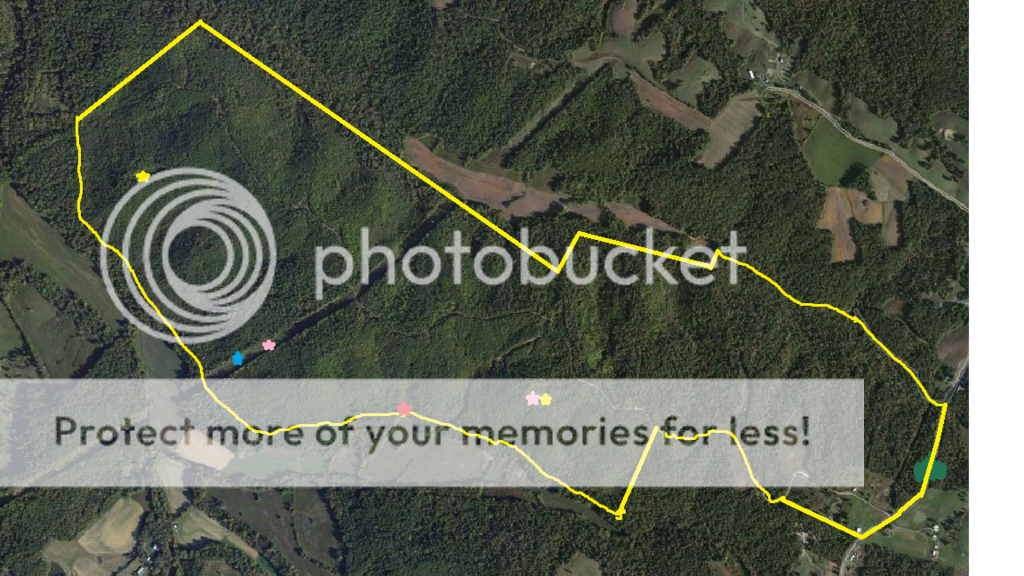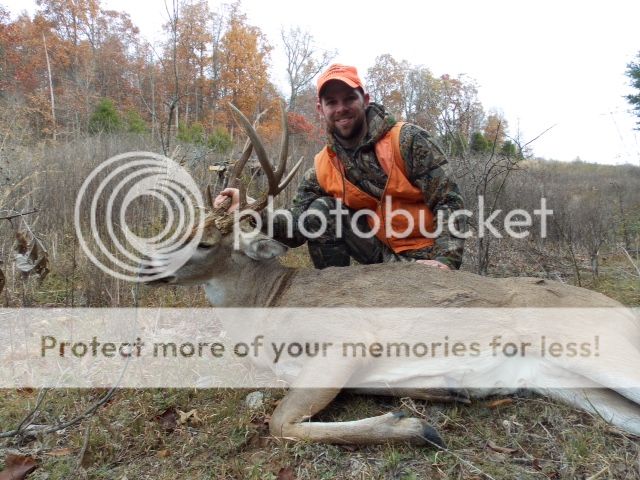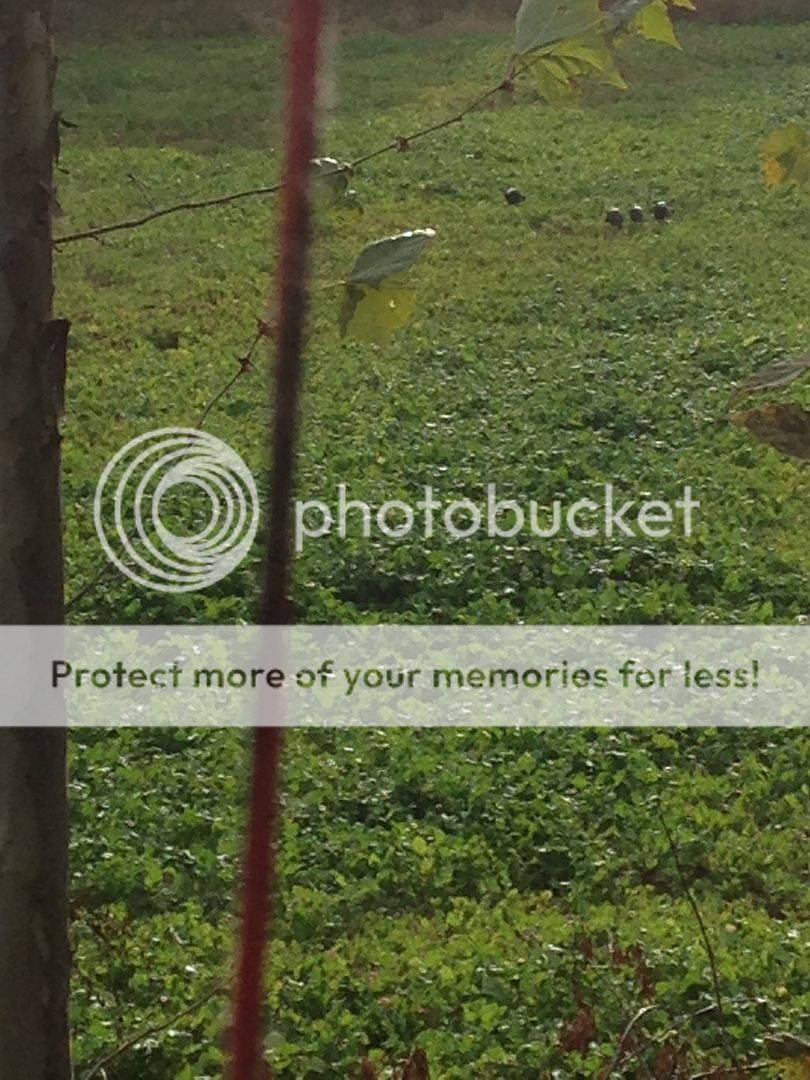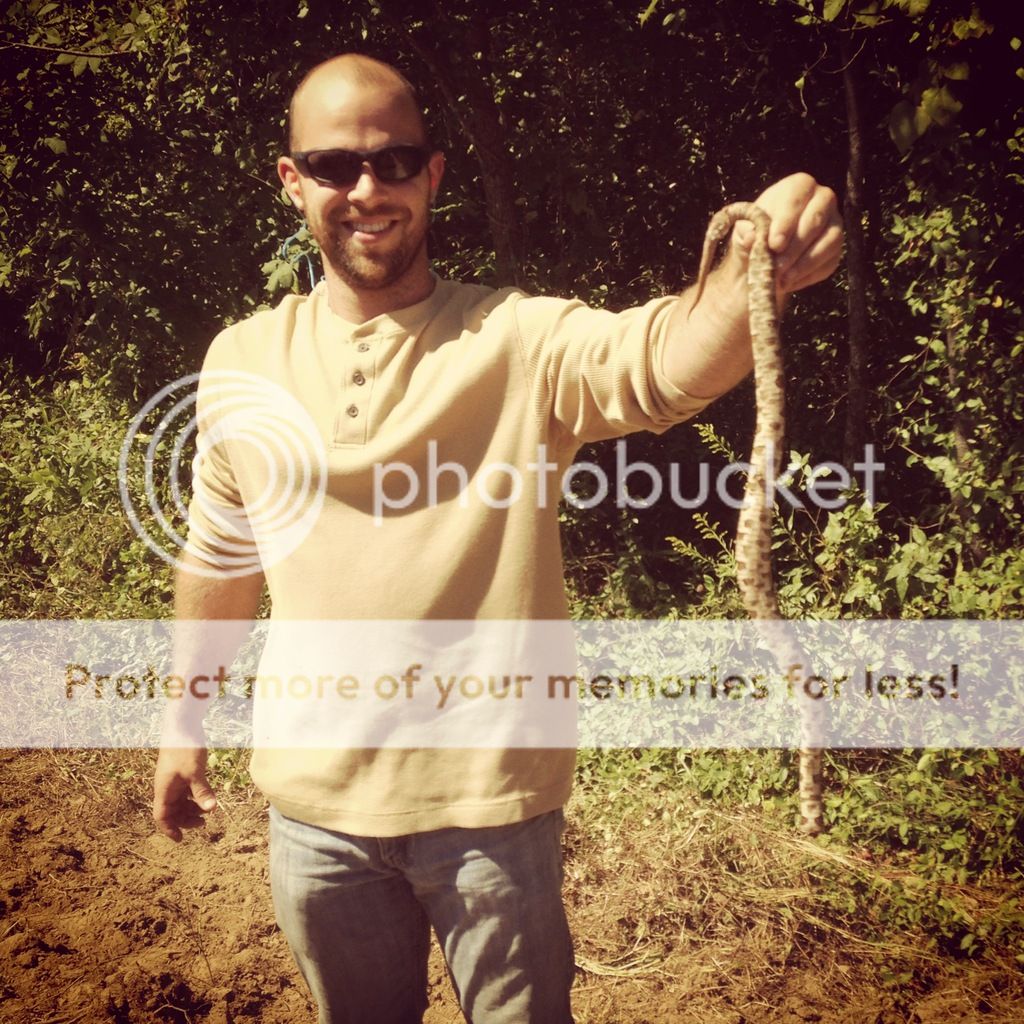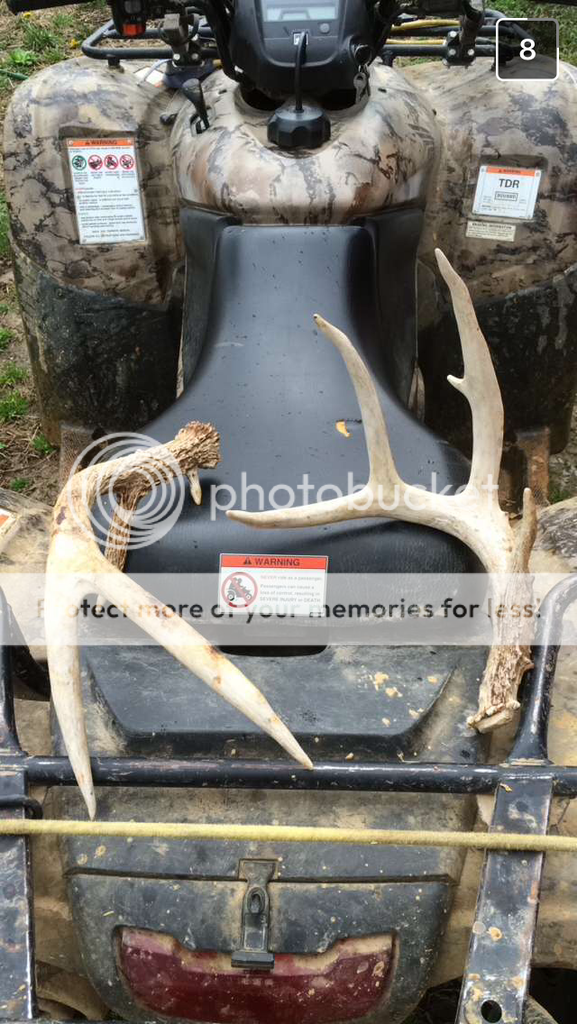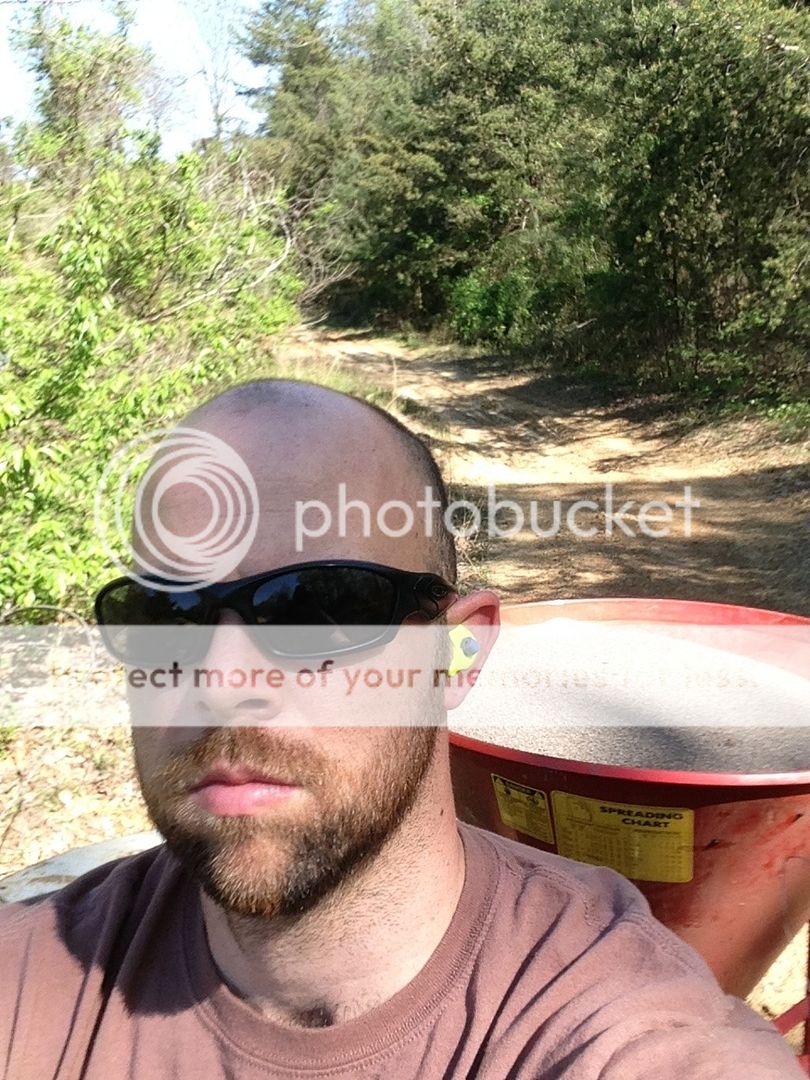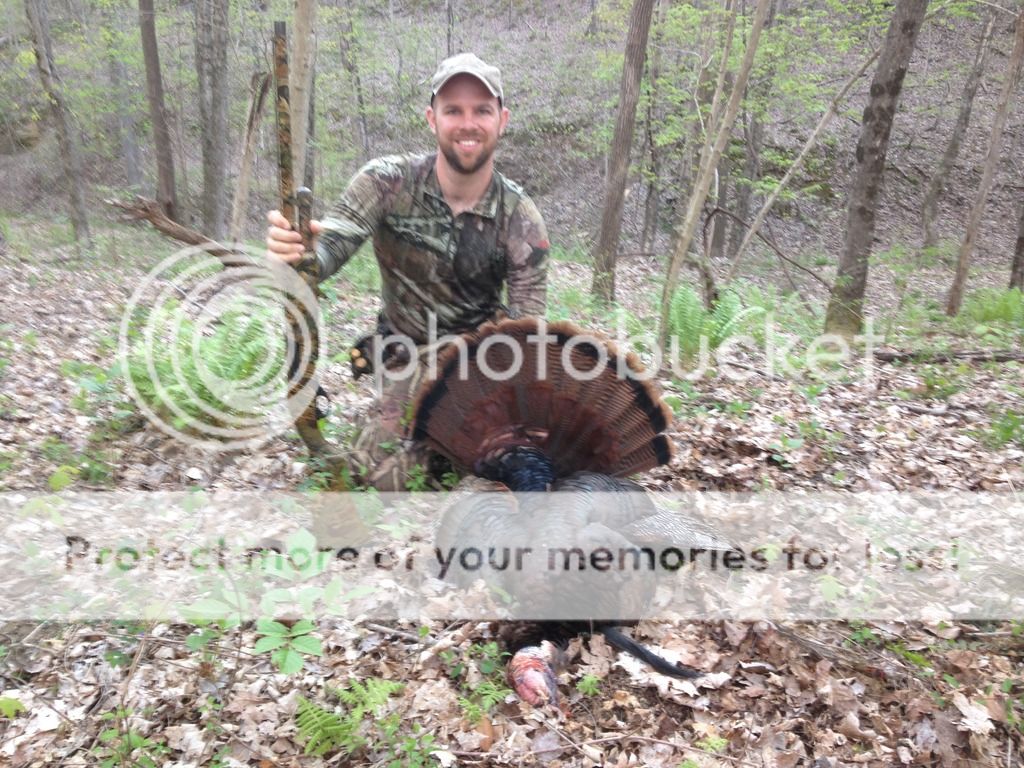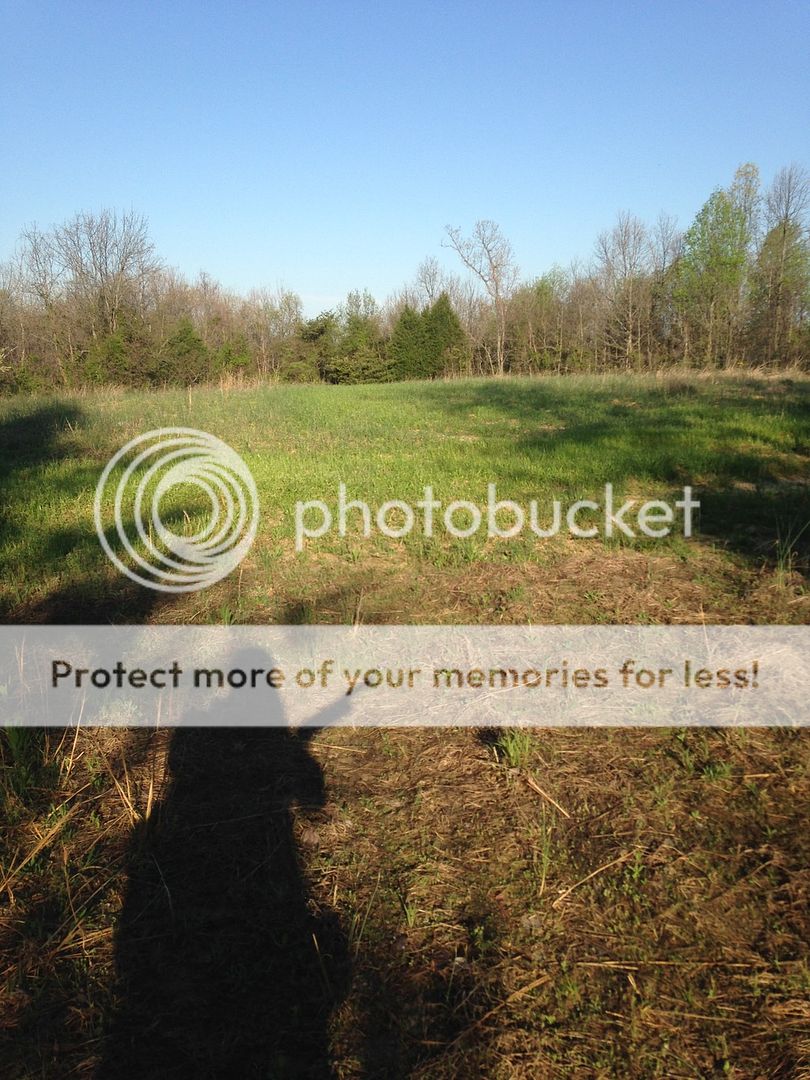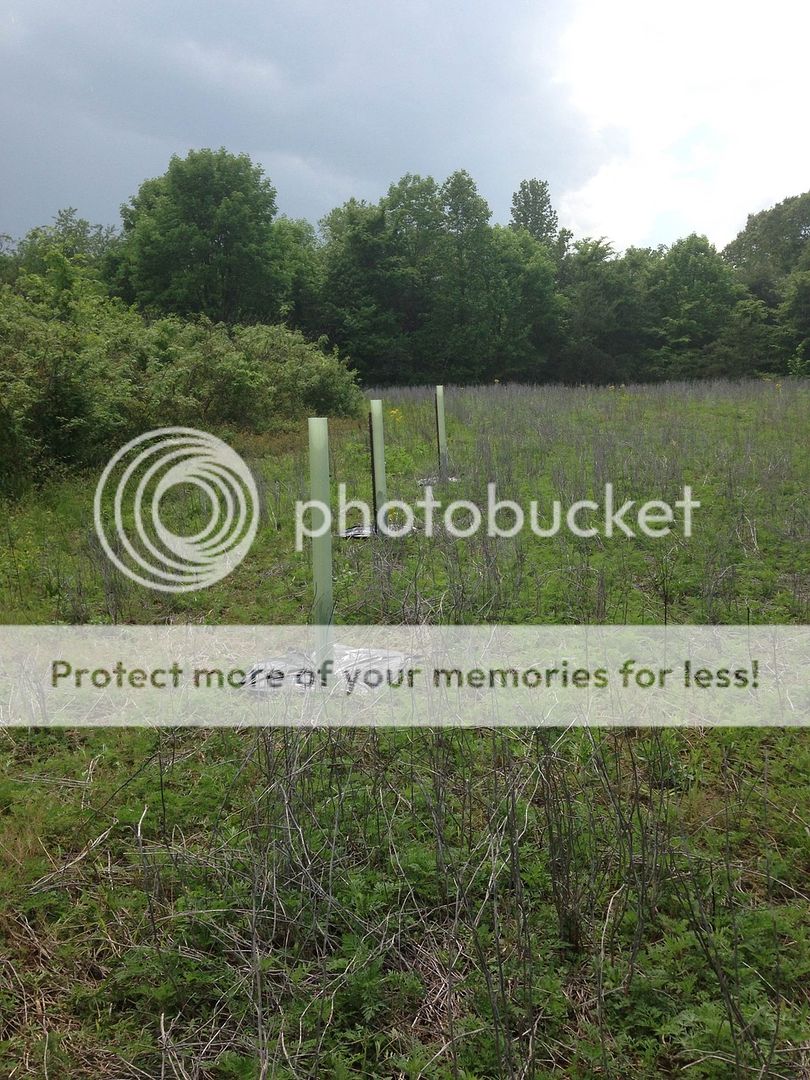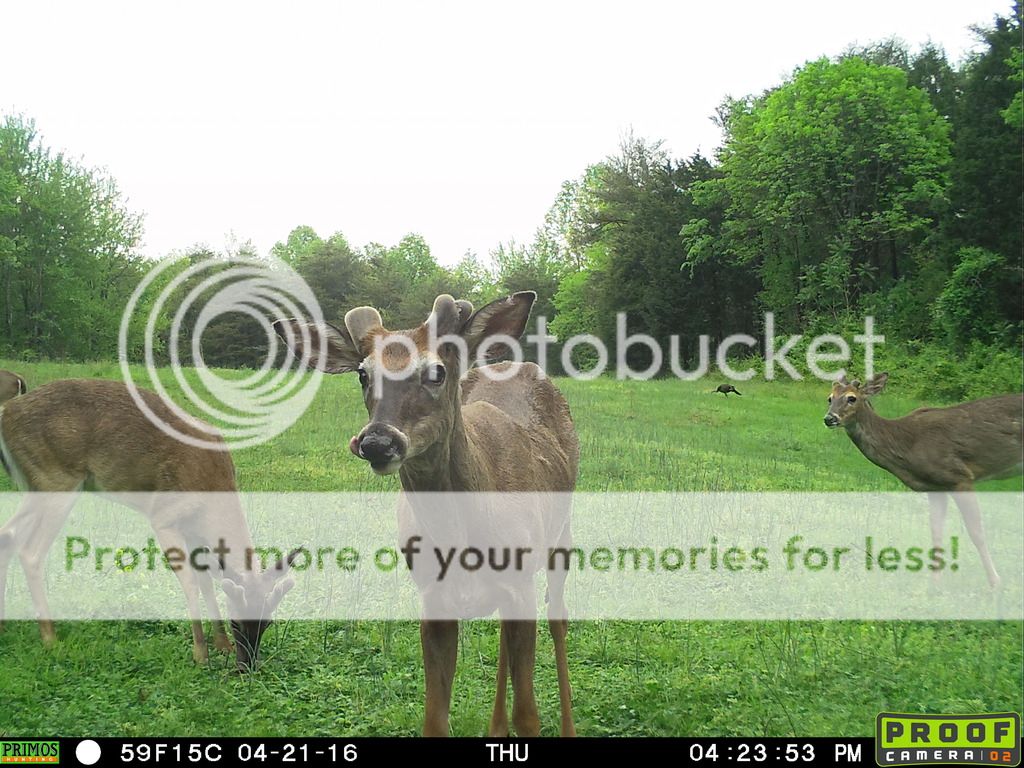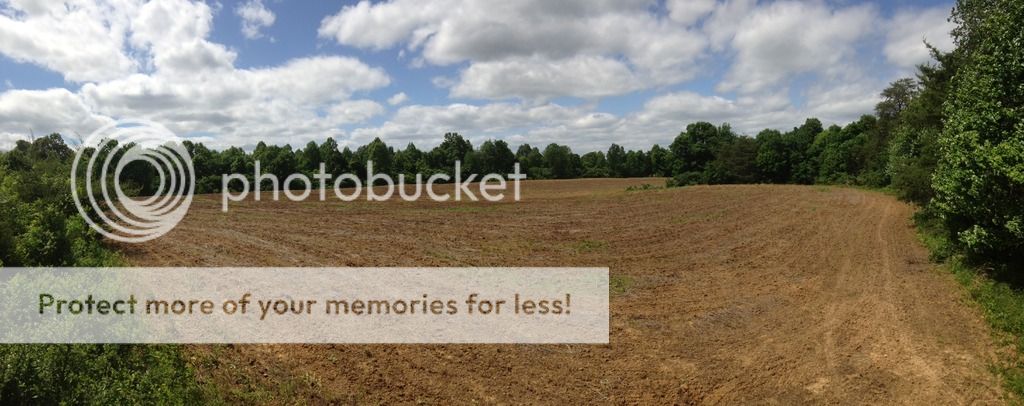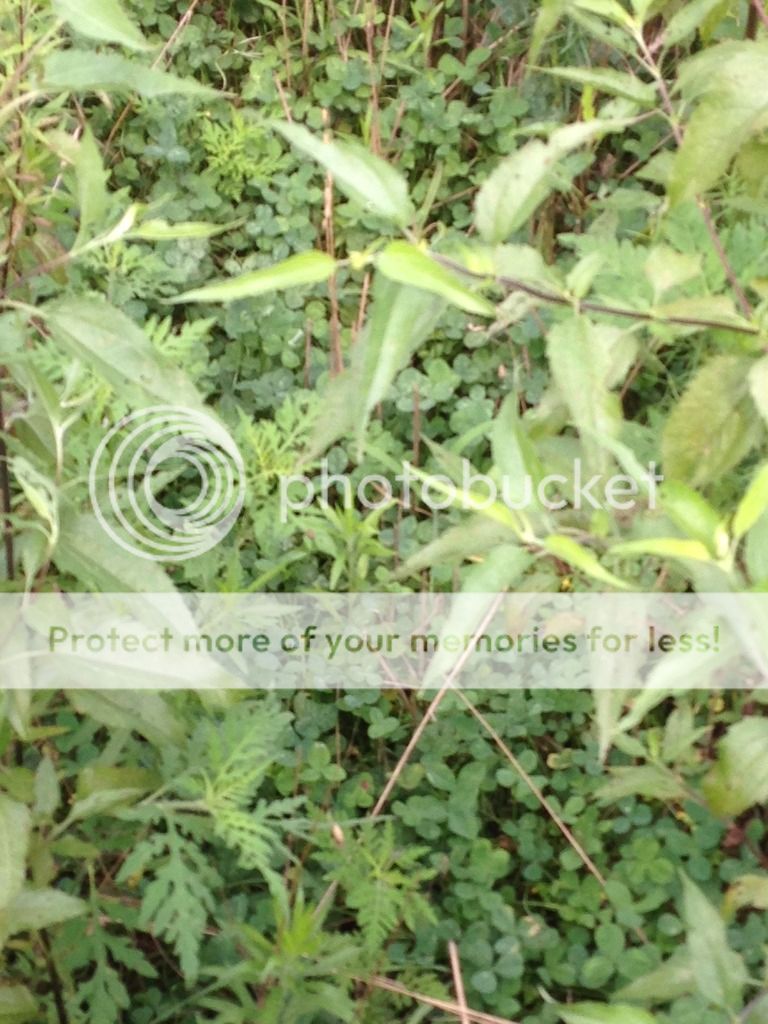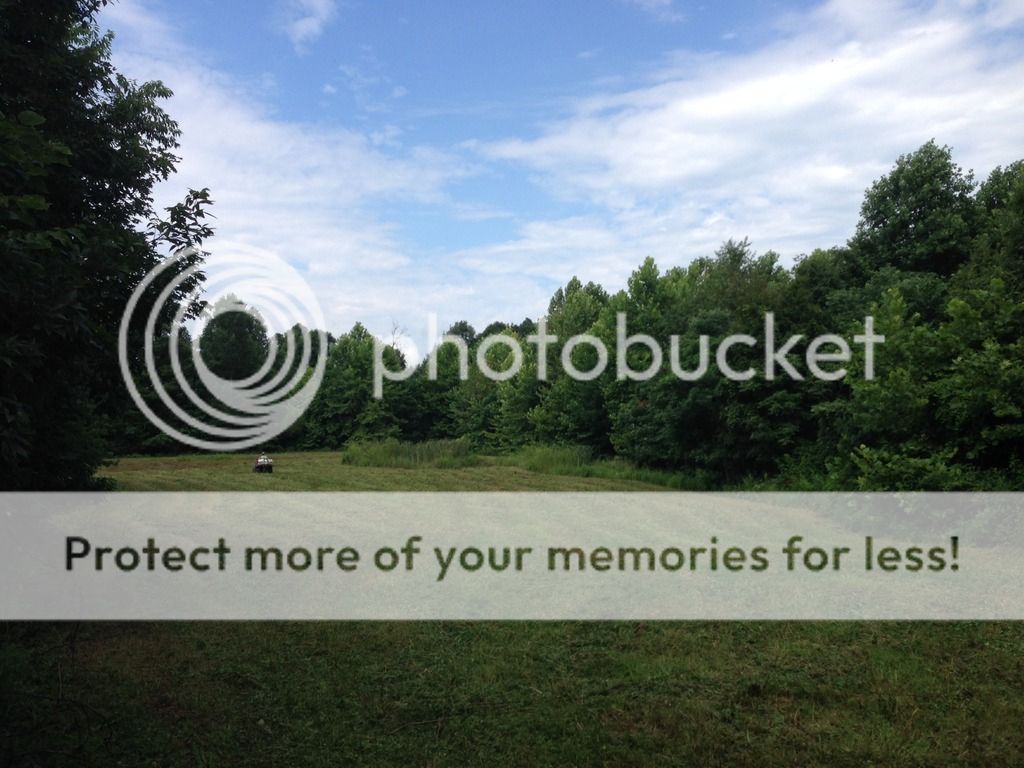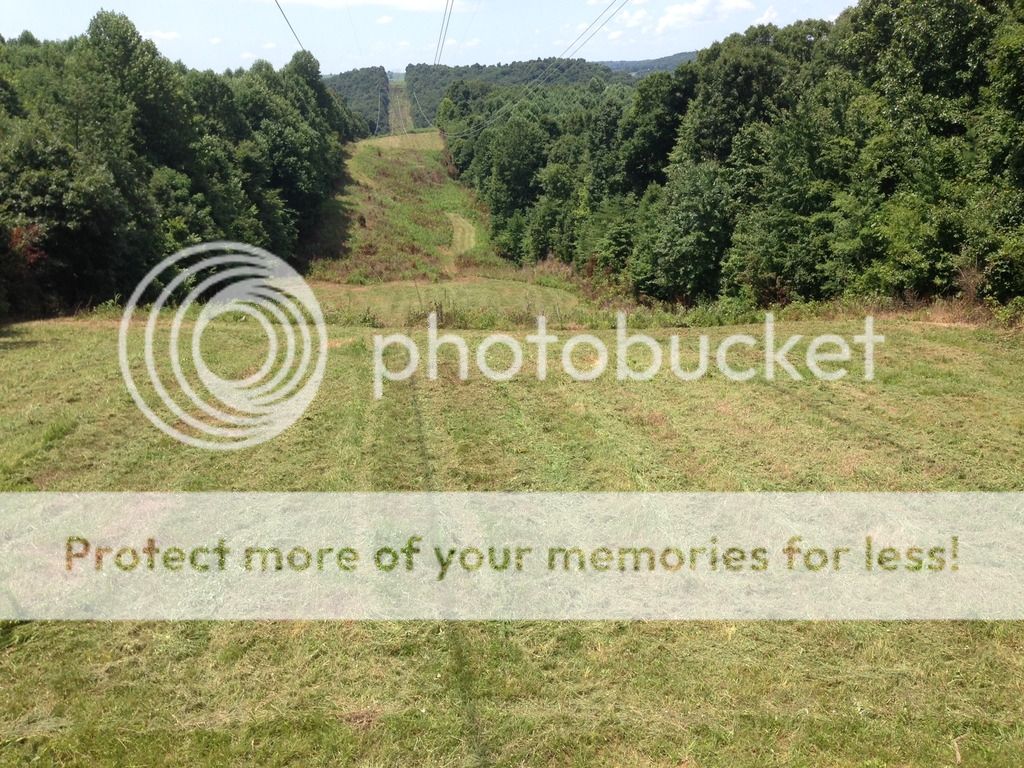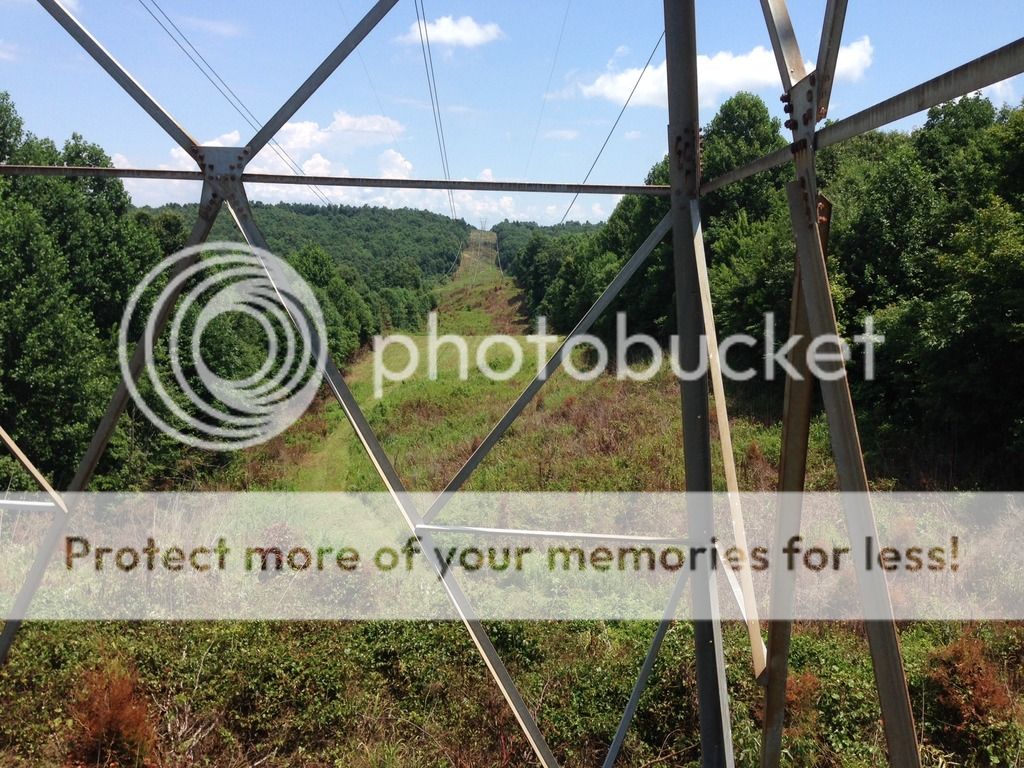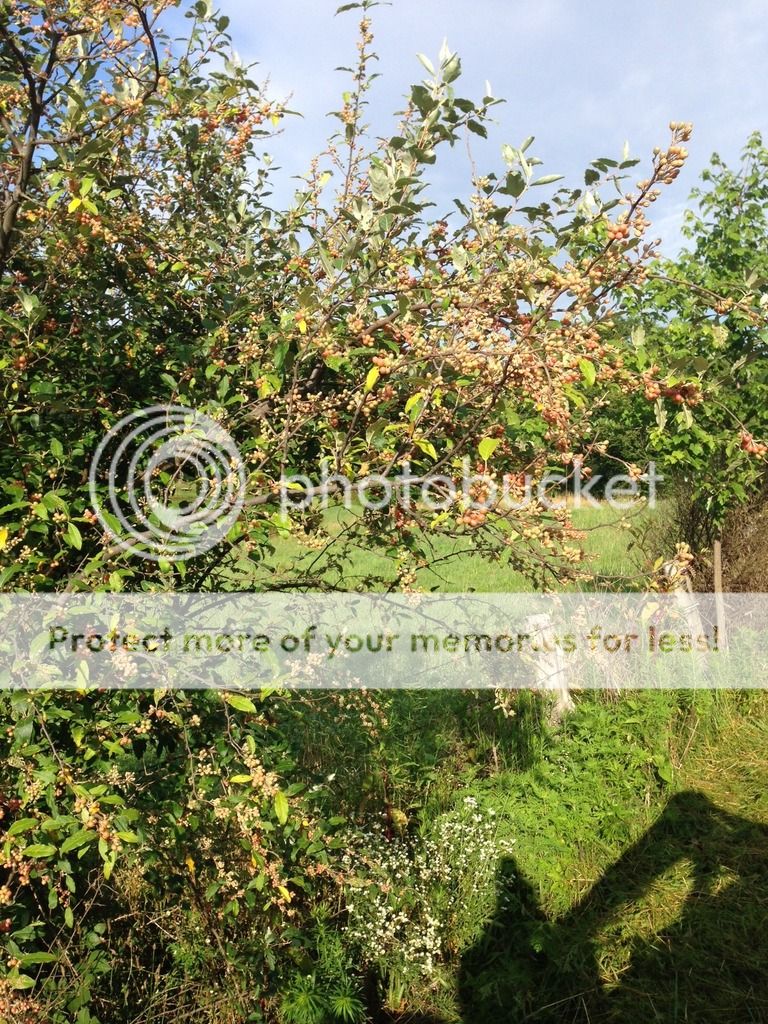Just wanted to share with you guys one of the projects that I've done to improve the hunting on my farm. The back half of the farm was clearcut in 1996. The KDFWR biologist had the loggers leave scattered white oaks along the main ridge and finger ridges to help re-seed the area. As a result, the only trees large enough for tree stands on the back half of the farm are either down low right along the property lines, or up high on the ridges. We knew we were under-utilizing the back half of the farm, but there simply were very few available locations for tree stands. I don't enjoy hunting on my neighbor's fence, so I decided to take matters into my own hands and create a hunting setup on one of the finger ridges.
I selected a finger ridge toward the back of the farm that we call the Logyard because it had a clump of 4-5 large white oaks adjacent to a flat section that would be perfect for a food plot. My grandfather, who owns the land, keeps a small JD 350 dozer on the farm to help with access trail maintenance and repair. He originally bought the farm for us to horseback and atv ride on, but I have since re-purposed it almost exclusively for hunting. As a graduate student in 2007, I was able to dedicate a full week during winter break to clearing off the log yard and prepping it for a food plot. I enlisted the help of a good friend and hunting buddy, and proceeded to make a mess.
List of mistakes:
1. We did no research or study of any kind as to the best way to clear 15 year old trees. While I ran the dozer, my buddy started cutting trees on the other end of the planned plot. It wasn't until he had cleared 1/3 acre that we realized we had just made it much harder on ourselves to push the stumps out with the dozer.
2. I did not know how to run a dozer. Actually, I knew how to operate one mechanically, but did not have the skill of a dozer operator. Someone who knew what they were doing could have probably made short work of our little project. We just made a mess. I won't go into much detail, but let's just say that our ~1 acre food plot probably took 200+ man-hours (imbecile-hours more like it) to get into condition to plant the fall of 2008.
3. I didn't have a plan other than I knew what tree I wanted to put my tree stand in. I didn't think about where I wanted to put all of the trees I cut down and pushed over. I didn't think about how I wanted to access the stand or whether it was supposed to be a morning or evening stand. I was the very definition of an amateur.
In spite of my serious lack of preparation, I had chosen a very "Deery" spot with pretty darn good soil to boot. The first year plot ended up with two brush piles in the middle of it, plus a number of large stumps that I was unable to push out with my dozer. One of the stumps I had visions of putting a stand in "one day when it was bigger," so I opted not to cut the 12 year old trees sprouting. View from the stand:
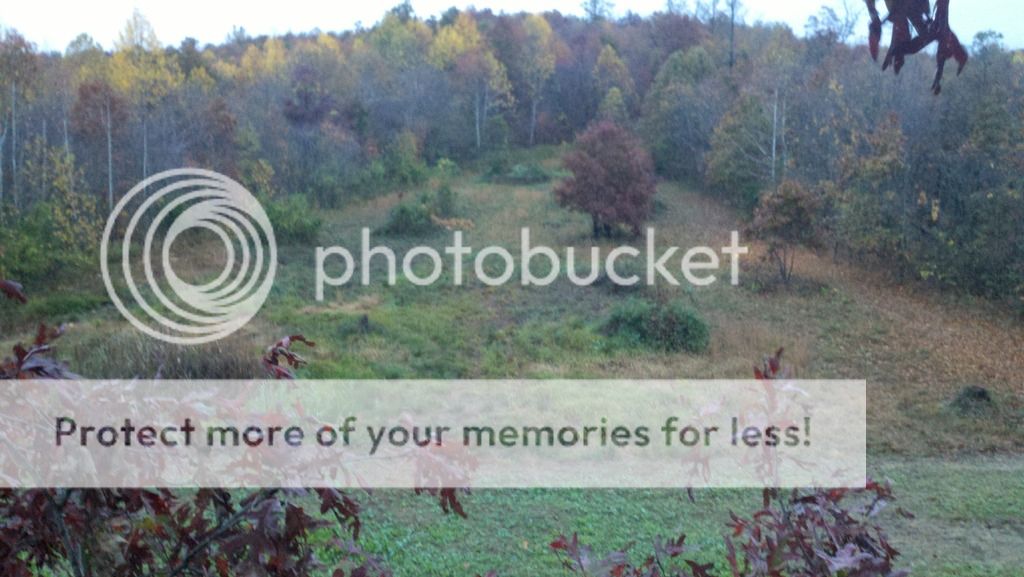
The fall planting consisted of Imperial Whitetail Winter Greens, which performed quite well and we killed 2 or 3 does out of the Logyard that year. It became apparent the first season that the Logyard was a morning spot. The deer would visit the logyard all morning usually up until mid-day or so. There were dozer ruts that provided water, plus brushpiles and un-cut trees that provided cover. Due to other priorities, it wasn't until winter of 2013-2014 that we decided to take the time to clear the rest of the log yard off so that it, well, looked more like a food plot! There wasn't really any other reason because we killed deer off the plot nearly every year. After doing the dozer work in the winter, we frost-seeded clover on the plot and got a great stand during spring/summer of 2014. In August, we sprayed and planted a turnip/wheat mix and had excellent results for the fall:
Also ran over a copperhead when planting in August :
Since we expected the enlarged/enhanced plot to become a major food source for the local deer, we decided to put another stand on the opposite end of the logyard plot that would be easier to exit in the evenings if the field was full of deer. The flaw with this stand was that 50% of the deer approached the plot from this end in the evenings, so the wind blowing from the plot towards me meant that 50% of the deer were winding me before they ever made it down to the plot. So an evening hunt out of the new stand almost always results in me getting winded, but a morning hunt still can work because the deer approach from the other direction. We have killed 3 does out of this new stand with rifles, but a bow spot it is not. Here is a picture from this new stand, facing the end of the plot where the original stand still resides:
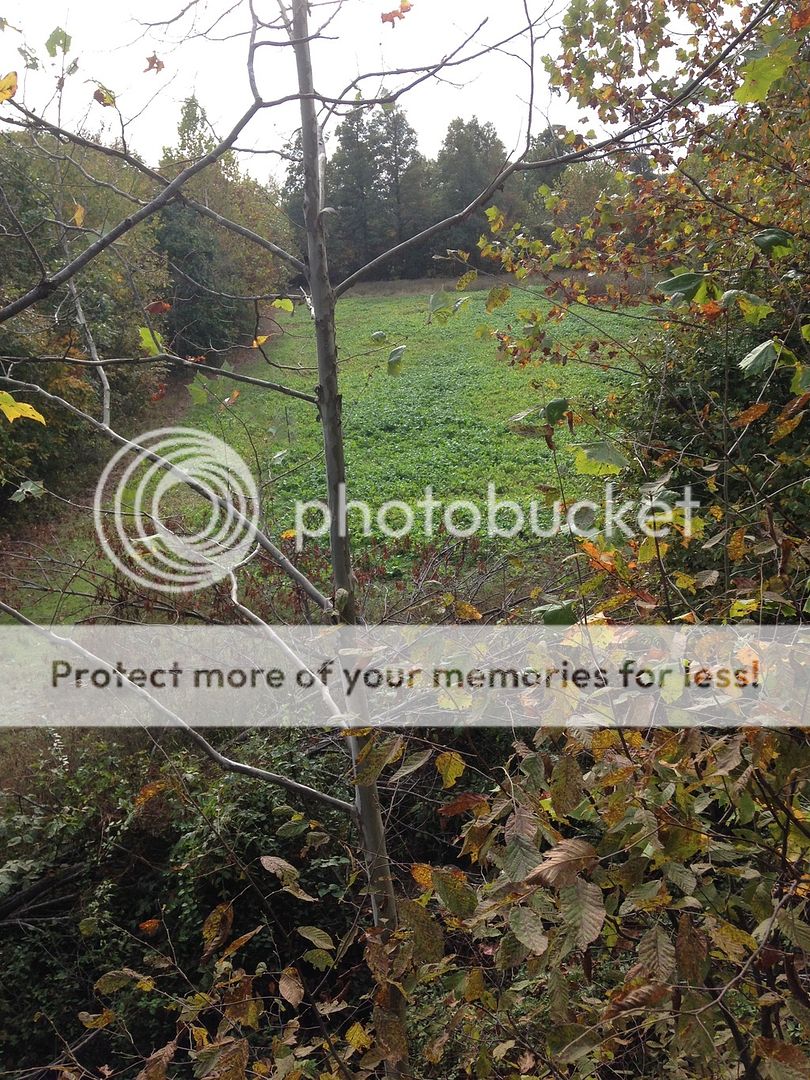
So, nothing groundbreaking here, but wanted to share a story of part of my management journey. I guess the lesson for me here was that you can do a lot of things wrong and still come out with nice looking results that produce meat for the freezer and many hours of enjoyment watching deer and turkeys.





